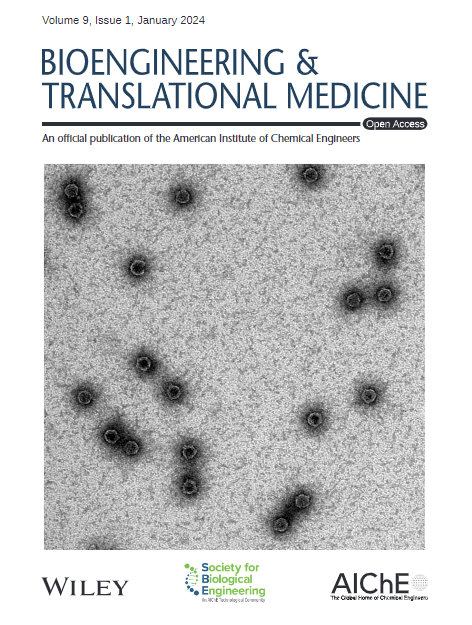Dynamic and living devices for overcoming fibrosis of implanted biomaterials
IF 6.1
2区 医学
Q1 ENGINEERING, BIOMEDICAL
引用次数: 0
Abstract
The fibrotic encapsulation of implantable medical devices reduces diffusion‐based mass transport and electrical conductivity between the tissue and implant, limiting many devices to weeks‐long rather than years‐long lifetimes. Most strategies to overcome fibrosis take a passive, materials‐driven approach to mitigate the chemical and mechanical mismatch at the tissue‐implant interface through superficial or structural implant modifications. Recent advancements in microfabrication and mechanotherapy have led engineers to incorporate smart and active mechanical actuation systems into implantable devices that use pressure, vibration, and integrated electronics to perpetually overcome effects of the foreign body response. Here, we highlight medical applications where active antifibrotic strategies outperform passive strategies in terms of device lifetimes and therapeutic outcomes, outline engineering design considerations for integrating active strategies, and discuss challenges in developing dynamic and living implants.用于克服植入生物材料纤维化的动态和活体装置
植入式医疗器械的纤维化封装减少了组织和植入物之间基于扩散的质量传输和导电性,将许多设备的使用寿命限制在数周而不是数年。大多数克服纤维化的策略采用被动的、材料驱动的方法,通过表面或结构的植入物修饰来减轻组织-植入物界面的化学和机械不匹配。最近在微加工和机械治疗方面的进展使工程师们将智能和主动机械驱动系统集成到可植入设备中,该设备利用压力、振动和集成电子设备来永久克服异物反应的影响。在这里,我们强调了主动抗纤维化策略在设备寿命和治疗结果方面优于被动策略的医疗应用,概述了整合主动策略的工程设计考虑因素,并讨论了开发动态和活体植入物的挑战。
本文章由计算机程序翻译,如有差异,请以英文原文为准。
求助全文
约1分钟内获得全文
求助全文
来源期刊

Bioengineering & Translational Medicine
Pharmacology, Toxicology and Pharmaceutics-Pharmaceutical Science
CiteScore
8.40
自引率
4.10%
发文量
150
审稿时长
12 weeks
期刊介绍:
Bioengineering & Translational Medicine, an official, peer-reviewed online open-access journal of the American Institute of Chemical Engineers (AIChE) and the Society for Biological Engineering (SBE), focuses on how chemical and biological engineering approaches drive innovative technologies and solutions that impact clinical practice and commercial healthcare products.
 求助内容:
求助内容: 应助结果提醒方式:
应助结果提醒方式:


